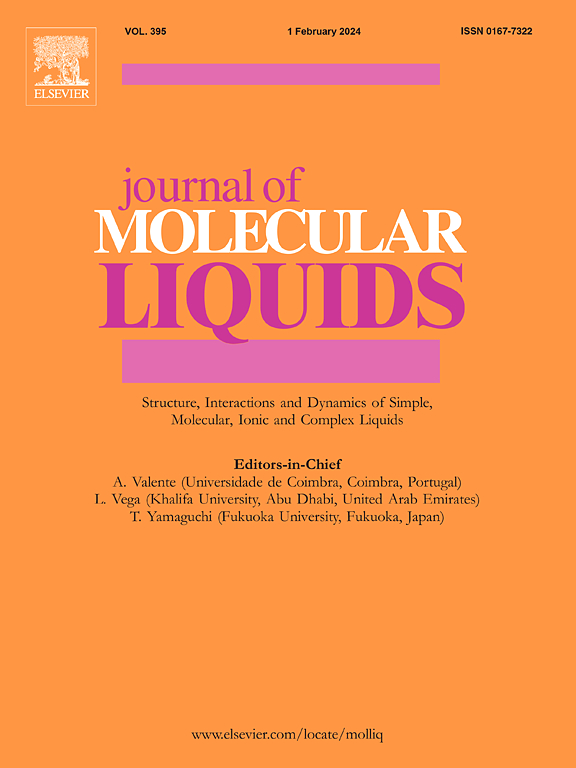Effective removal of tetracycline from wastewater using carbonaceous materials derived from Brassica oleracea plant: Experimental and computational perturbation
IF 5.3
2区 化学
Q2 CHEMISTRY, PHYSICAL
引用次数: 0
Abstract
This study aimed to convert low-cost agricultural biomass wastes from cabbage plant into biochar (BC) and active biochar carbon (ABC). They can be used for tetracycline (TC) removal from aqueous media that is a promising mean toward waste biomass utilization. Different analytical tools have been employed to fully characterize of the synthesized materials. Batch method was applied to investigate the kinetics and isotherms to illustrate the adsorption mechanisms. The model of pseudo second-order fit well for both biosorbents, according to kinetic measurements, indicating a chemisorption mechanism. The model of Freundlich isotherm was the well-described one, according to isotherm data. The TC adsorption capacity was found to be 163.93 mg/g for ABC, exceeding BC by a value of 3.7 times (43.48 mg/g). On both adsorbents, the spontaneous and exothermic nature of TC adsorption was validated by the negative values of ΔG and ΔH. Additionally, the BC and ABC could be effectively maintained at ∼ 80 % and 85 % of their respective capabilities following five regeneration cycles. Also, both structure and electronic properties of the TC-ABC were investigated via computational perturbation. Using DFT/GGA/PBE, a geometrically optimized method was applied to the system under study. Based on the same degree of computations, frontier molecular orbital (FMOs) and molecular electrostatic potential (MEP) investigation were considered. An identification of the atomic orbital as a major or minor electronic distribution by deducing the electronic density of states (DOS). The most accurate description of the adsorbed model’s stability over time was provided by a dynamic simulation analysis at high temperatures.

求助全文
约1分钟内获得全文
求助全文
来源期刊

Journal of Molecular Liquids
化学-物理:原子、分子和化学物理
CiteScore
10.30
自引率
16.70%
发文量
2597
审稿时长
78 days
期刊介绍:
The journal includes papers in the following areas:
– Simple organic liquids and mixtures
– Ionic liquids
– Surfactant solutions (including micelles and vesicles) and liquid interfaces
– Colloidal solutions and nanoparticles
– Thermotropic and lyotropic liquid crystals
– Ferrofluids
– Water, aqueous solutions and other hydrogen-bonded liquids
– Lubricants, polymer solutions and melts
– Molten metals and salts
– Phase transitions and critical phenomena in liquids and confined fluids
– Self assembly in complex liquids.– Biomolecules in solution
The emphasis is on the molecular (or microscopic) understanding of particular liquids or liquid systems, especially concerning structure, dynamics and intermolecular forces. The experimental techniques used may include:
– Conventional spectroscopy (mid-IR and far-IR, Raman, NMR, etc.)
– Non-linear optics and time resolved spectroscopy (psec, fsec, asec, ISRS, etc.)
– Light scattering (Rayleigh, Brillouin, PCS, etc.)
– Dielectric relaxation
– X-ray and neutron scattering and diffraction.
Experimental studies, computer simulations (MD or MC) and analytical theory will be considered for publication; papers just reporting experimental results that do not contribute to the understanding of the fundamentals of molecular and ionic liquids will not be accepted. Only papers of a non-routine nature and advancing the field will be considered for publication.
 求助内容:
求助内容: 应助结果提醒方式:
应助结果提醒方式:


